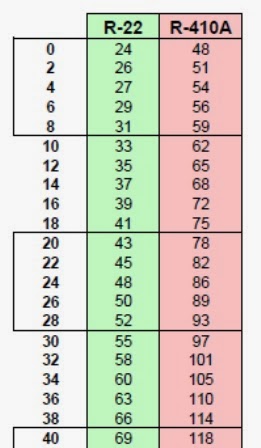1. Do not sell on Price! Use '
Simple Payback'
The price of High-efficient equipment will undoubtedly cost more money up front, compared to the minimum efficiency systems. Taking into account existing repair bills, utility bills, installation, and equipment costs, a high-efficient furnace, boiler, or heat pump will cost the homeowner less over the estimated 10-15 years of operation. When completing the 'Simple Payback' calculation, the high-efficient heating system in New England will win-out every time! The strategy for High-Efficient Air-Conditioning Equipment is to use Rebate amounts in the calculation. Due to much less run times, without introducing utility rebates into the equation, High-Efficiency Air-Conditioning can be a tough sell! Be sure to highlight the additional features, such as increased comfort, indoor air quality, reduced noise, and environmental impact that can not be reflected in the payback calculation alone.
2. Trusting Load Calculations (ACCA Manual J)
One of the first barriers a new energy efficiency contractor must break through is proper equipment sizing. Learning to complete a site survey, and enter gathered information into a software program can appear elementary. Except, now you need to trust the number provided and install equipment to match that load. Please, have no fear! If completed correctly the system design process works! You must use your local design temperatures and proper
indoor conditions to satisfy local codes. Do not manipulate this information as oversized equipment will likely operate less efficient than that 13 SEER A/C or 7.5 HSPF Heat Pump you have moved on from installing.
3. 'Customer Education after Equipment Installation'
Properly sized, high-efficient equipment does not operate the same way as the larger, less efficient counterparts. These systems will not have quick recovery times and are sized to maintain comfort in the home. This means customer education after equipment installation. Be sure that the programmable thermostat does not get set back too far, only a few degrees in cooling. Also, the controller should not be an on/off switch! Remind your customers that setback on a hot summer day is recommended instead of turning your thermostat to 'Off'. This will make them more comfortable when they arrive home from work, and save peak power during the highest demand. I have heard contractors explain to their customers that on a hot day, if the thermostat was off, the system may take up to one hour per degree to recover!
4. Maintenance
In order to meet customer's expectations, and manufacturer warrantees, annual maintenance of high-efficient HVAC equipment is mandatory! Whether it is basic air filter and coil cleanings for air-conditioners, CO safety checks on furnaces, or possible limescale removal from a boiler, annual maintenance is required to achieve the efficiencies promised in the sales process. Start educating the customer at this point, do not let it be a surprise years down the road after equipment failure. If adopting this path, your preventive maintenance program should flourish with happy, vocal customers.
5. Contractor & Technician Continuing Education
When you make a conscious effort to promote energy efficiency and increase your brand, continuing education becomes a necessity. Every year manufacturers and distributors introduce new, more efficient equipment to your sales team, teach the technicians how to maintain and service, only to turn around and make changes the following season. This process can become frustrating to even the most motivated contractors. If you want to participate in this process, continuing education to keep up with new technology is a must! Do not skip that evening class at your local distributor next week. Just ask any of the Old Timers in HVAC, just blink and the industry will pass you by!

 What do you think about ducts in an attic? I find they are a huge efficiency drain, sucking money from a homeowner's pocket year round. Equipment must be larger, there will always be leakage, most attics are not ideally vented, and never mind the IAQ issues! I was once with a contractor that found multiple dead animals in an attic that caused a stench like no other, sucked in through leaky returns and evenly distributed through out the home. Is the answer to remove attic ducts as an option, via code? Maybe eliminate attics?
What do you think about ducts in an attic? I find they are a huge efficiency drain, sucking money from a homeowner's pocket year round. Equipment must be larger, there will always be leakage, most attics are not ideally vented, and never mind the IAQ issues! I was once with a contractor that found multiple dead animals in an attic that caused a stench like no other, sucked in through leaky returns and evenly distributed through out the home. Is the answer to remove attic ducts as an option, via code? Maybe eliminate attics?














